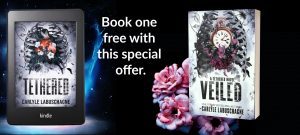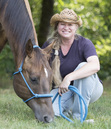Elena Hartwell's Blog, page 61
July 13, 2020
Mershon Niesner Explores Mother Loss in Her New Book
Mershon Niesner has written a timely book for daughters dealing with the loss of their mothers through situations such as disease, violence, suicide, and other forms of loss, such as dementia. A thoughtful book that includes coaching questions with chapter, steps designed to help daughters cope.
I’ll be back soon with more posts about a writer’s life, meanwhile, you can read a previous post by clicking the link here.
The Author: Mershon Niesner
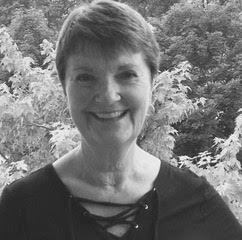
Mershon Niesner
Mershon Niesner was eight-years-old when her mother died. In addition to her early loss story, Mershon interviewed over fifty daughters.
Their stories give readers who have experienced teen or young adult loss, loss through homicide, abandonment, or Alzheimer’s disease a sense of camaraderie, insight into how to move forward and compassion for the experiences of others.
To learn more about Mershon, click on her name, photo, or any of the following links: Facebook – Life After Losing a Mother Blog
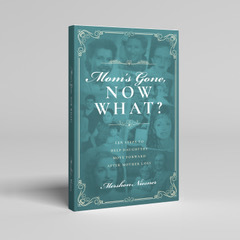 The Book: Mom’s Gone, Now What? by Mershon Niesner
The Book: Mom’s Gone, Now What? by Mershon NiesnerAn intimate, powerful, and inspiring guide by a woman who understands mother loss as a life-altering experience.
Mershon Niesner understands that losing your mother is a life-altering experience.
Her writing is a guide forward as you strive to answer the “now what?” question in your mother loss journey.
To buy the book, click the link: Amazon
The Interview with Mershon Niesner
Tell us about Mom’s Gone, Now What? How did this project come about?
Writing this book was a spiritual calling for me. It started with a nudge from Virginia, a ninety-one-year-old woman I met for the first time in the middle of my street in May 2017. She encouraged me to join a local writers’ group and insisted that I write a book. It was spring, a time for planting. Virginia turned over the soil of my life (quite literally) and planted the seed for my book.
Soon after meeting Virginia, I knew the topic for my book. I’d worked on a variety of life issues, including mother loss, for eight years in group therapy, participated in two motherless daughter support groups, had written topic-related poetry and letters. Mother loss had taken up much real estate in my psyche over the years. Now was the time to write a book about it.
My focus on mother loss surfaced because of my legacy of loss. My mother died when I was eight, her mother died when my mother was three. In addition to my early loss story, I interviewed over fifty daughters in order to give readers a broad perspective. The stories and advice in the book comes from daughters of early loss, teen and young adult loss, loss through homicide, abandonment, and Alzheimer’s.
What was your publishing experience like?
When COVID-19 hit in early-March, I was still querying agents with the hope of being traditionally published—which I had my heart set on. However, the pandemic made me realize, more than ever, that life can be short.
Also, because I was closing in on turning seventy five, I decided I couldn’t afford to continue down the long and uncertain path of traditional publishing. It sounds morbid, but I literally thought to myself, I don’t want to die and not publish this book. That’s when I decided to self-publish. I found a great designer and got the job done literally on the day of my 75th birthday, July 11, 2020.
During the process I had to get up to speed on ISBN, PCIP, SEO and a host of other technical issues. I also designed my own web site www.mershoniesner.com.
What would you like readers to take away from reading your book?
My hope is that readers will come away with a sense of camaraderie, insight into how to move forward after mother loss, and compassion for the experiences of others. As a Certified Life Coach, I pose coaching questions at the end of each of the ten steps as a tool for moving forward.
Launching a book in a pandemic is a crazy experience, what are you doing to promote your work?
First, I rewrote my marketing plan to reflect a COVID environment. The foundation of that plan is Zoom, Zoom, and more Zoom. I learned how to create a PowerPoint slide program to use on Zoom when I present to book clubs, women’s groups, and support groups. This makes my program more interesting that simply a talking head.
Since I’m unable to sign books in person, I’ve printed labels that I sign, personalize, and mail to those people who want a signed book.
I am putting my book in my local indie book stores but I’m not working on placement in other brick and mortar establishments like book chains, libraries, gift shops etc. right now. That will come later.
I have a large Facebook audience, a well-supported blog, and I’m a member of at least eight on-line motherless daughter and Alzheimer’s care groups to whom I will market.
Of course, my blog and web site will also be marketing tools.
What was the most challenging aspect of writing Mom’s Gone, Now What?
Learning about a whole new industry, major rewrites (thank goodness I had a good editor) and the frustration of not attracting an agent.
What are you working on now?
I’m about half way through writing a companion book entitled, A Year of Support For Motherless Daughters—365 Insights, Affirmations, and Life Coaching Questions. I’m taking some of the material from my blog, www.motherloss.blog, which I’ve been writing and sharing for over three years.
Final words of wisdom for other writers considering self-publishing:
It’s not as easy as you might think if you do it all yourself (as I did). I considered investing in an organization like LuLu or Outskirts Press but by the time I contacted them I was already too far down the road (my book had been thoroughly edited twice, I had cover art and an interior design) to make it financially worthwhile.
As they say, “The Devil is in the details.” Until I could figure them out, tiny glitches kept my book from publishing on KDP. It was frustrating and took a great deal of patience over about two weeks.
Having a very professional editor like Elena made all the difference. I was also happy with my professional designer. You need to hire excellent professionals if you self publish! (It was an absolute pleasure to work with you, Mershon!)
A few other upsides of self-publishing, besides getting it done in a timely way, are having complete control of your work. I “broke the rules” on my cover design but it is exactly what I wanted. I’m glad I didn’t have to change my title and I’m pleased that I didn’t have to sacrifice content that was important to my message and mission.
Such a pleasure to have you on my blog today! This is a wonderful and valuable book, I wish you every success!
Header photo by SabineVanerp on Pixabay. Click the link here for more information.
The post Mershon Niesner Explores Mother Loss in Her New Book appeared first on Elena Taylor.
July 10, 2020
Lisa Brackmann on the Launch of Black Swan Rising
Lisa Brackmann discusses the (re) launch of Black Swan Rising, music, and her obsession with . . . (read on to find out!)
The Author: Lisa Brackmann
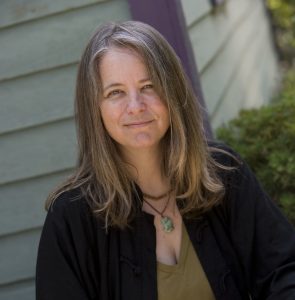
Lisa Brackmann
Lisa Brackmann is the New York Times best-selling author of the Ellie McEnroe novels set in China and the thrillers Getaway and Go-Between.
The first Ellie book, Rock Paper Tiger was one of Amazon Top 100 Books of the Year and a Top 10 Mystery/Thriller. Hour Of The Rat, the sequel, was shortlisted for Left Coast Crime’s international mystery award and was nominated for the Anthony Award for Best Audio Book.
Dragon Day, the third novel in the Ellie McEnroe trilogy, was a Seattle Times Top 10 Mystery of 2015 and was short-listed for a Lefty award. Getaway was an Amazon Best Book of the Month and a finalist for SCIBA’s T. Jefferson Parker award. Her novel Go-Between was called, “a terrific noir tale that channels Richard Stark’s stories” and a “Hottest Summer Books” selection from the Minneapolis Star-Tribune.
Her work has also appeared in The Wall Street Journal, Travel+Leisure, Salon, Los Angeles Review of Books and CNET. She lives in San Diego with a cat, far too many books and a bass ukulele, and she’s playing in a band again after a 17-year break.
To learn more about Lisa, click on her name, photo, or any of the following links: Twitter, Facebook, and Instagram
Black Swan Rising by Lisa Brackmann
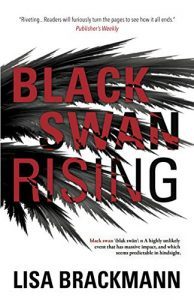
Sarah Price wants a career in politics. But she has a secret past that won’t stay past, threatening her job on a San Diego congressman’s reelection campaign.
Casey Cheng wants a story. An ambitious local television reporter, Casey needs to get her career back on track after being seriously injured in a mass shooting. When she investigates the man who nearly killed her, she finds a connection to a group of online harassers called #TrueMen―and realizes her shooter may not be the only killer they have inspired.
Casey’s investigation and Sarah’s secret put them both in the crosshairs of a hate group that targets anyone they’ve deemed to be against their cause, including Sarah’s boss, the congressman. Now Sarah and Casey have a choice to make―do they hide? Or do they fight back?
To buy the book, click on any of the following links: Amazon, Barnes & Noble, and IndieBound
The Interview with Lisa Brackmann
Black Swan Rising covers very difficult issues, including: race, gender, and gun violence. That’s a lot to tackle. What prompted you to write about such challenging issues?
Boredom? Masochism? Truthfully all of my books have an issue or two at their core. What happens is, I become interested in something that I think is important, I gather a lot of information and then I need to process it in some way.
I want to communicate what I discovered.
I’m not really an essayist, and I think that fiction is a great vehicle to do that, as long as you can embed the issues deep in the bones of the story. Otherwise you end up with something didactic, which is no fun in a novel.
“New publishers aren’t generally inclined to pick up an orphaned book, especially in this very challenging business environment.”
Black Swan Rising was originally published by Midnight Ink, and it was launched again this month as a self-published book. Can you tell us why you chose that route and what that experience was like?
Midnight Ink was shuttered by its parent company about a month after Black Swan Rising was published. I knew that meant no paperback, no further marketing of any kind and limited availability. I didn’t want my book to be the resident of an abandoned house, so I pushed as hard as I could to get the rights back.
As to why self-publishing, unless the book was a tremendous hit, your options in this situation are pretty limited. New publishers aren’t generally inclined to pick up an orphaned book, especially in this very challenging business environment.
I decided to partner with my agency, Curtis Brown – they have a co-publishing program, and I felt that having some sort of infrastructure behind the book was a better option for me than trying to do it on my own for the first time.
We’re still working on stuff like, getting the reviews on the older edition linked to the new one and getting the paperback in publishable shape. But so far so good. I asked the artist who designed the original cover to do this one, and I think the result is spectacular! I wanted the new edition to look professional and be professionally executed.
We follow more than one Point of View character throughout the novel. That’s a challenge to pull off, but you do it very well. What was your process in making all the Point of View characters equally engaging? What led you to writing from multiple POVs and why did you choose the characters you did?
That really was an organic process, not something I’d planned.
I started with Sarah. In fact, I wrote that first chapter in July 2014. When I was able to get back to the book, I realized that it would be very difficult for me to tell the story that was evolving as I wrote.
I wanted to talk about the impact of gun violence, and I also was going to need a character who was better suited to investigate what was going on than Sarah—a staffer on a congressional campaign—would be.
So, I had Casey Cheng, a very minor character, an extra with a couple of lines, really—who’d appeared in Sarah’s Twitter feed and that I’d decided to make one of the victims of the mass shooting at the book’s beginning, just because we’d seen her reporting from the scene and that way, readers would have at least some connection to one of the victims, rather than them just being names.
And I realized that Casey was the perfect vehicle to both look at the effects of gun violence and to further investigate the conspiracy—if there is one–that drives a lot of the action in the story.
I can’t remember why I decided to make Lindsey, the congressman’s wife, a POV character. I think I just got to the point of the story right before we go into her head and thought, “You know, I think I need another perspective on what’s going on here.”
I didn’t just want to leave the interpretation of Matt, the congressman, all in Sarah’s hands. She’s simultaneously starry-eyed, suspicious and smitten, but she doesn’t really know Matt. I wanted to get closer to him without getting into his head, and his wife seemed like an interesting choice.
Lindsey could have easily ended up as an unpleasant stereotype, and I thought that she might have some interesting things to say to counter that.
As to the “how,” a lot of it for me is finding a character’s distinct voice. I need to be able to hear them in my head, to channel that onto the page. Whenever I start getting lost with a particular character, I take a step back and try to put myself in their shoes and let how they would see a situation, how they would think about it and talk about it, flow through me.
“…San Diego is actually a very safe city–the safest large city in the United States.”
You and I grew up in the same neighborhood in San Diego. I loved reading this book and knowing exactly where everything took place and what the locations look like. I’m curious if it was psychologically or emotionally difficult to frame such a violent story in your own backyard?
Oh god yes. So, even before the pandemic, I was a huge walker (now I’d put myself in the “obsessive” category). I spent a lot of time walking around this neighborhood and the extended community, observing. Thinking, this is a much more interesting place than I’d realized it was when I lived here before, and it would make a great setting for a novel.
(IMPORTANT BACKSTORY: Elena and I both went to the high school that was the model for Cameron Crowe’s FAST TIMES AT RIDGEMONT HIGH. I’m here to testify that Spicoli is real, y’all!). (Elena here—It’s true!!! Totally real!!)
As the characters in BSR say more than once, San Diego is actually a very safe city–the safest large city in the United States. But guns are everywhere in this country, and with guns, the possibility of sudden gun violence. San Diego County had what was for a number of years after the worst mass shooting in the US, the San Ysidro McDonald’s massacre in 1984.
“…I really freaked myself out.”
I am not really a paranoid person. I walk all over the place, I walk at night, I am observant and aware of my surroundings, but if I really worried about the bad things that might happen, I wouldn’t do a lot of the things that I do. But with this there were several times that I really freaked myself out.
One was when I went to an event that featured two congressmen. One of the things that impressed me was how accessible many of our elected officials actually are. But the flipside of this was, I started thinking, “Anyone could walk in here with a gun and start shooting. There would be no way to stop them.”
And we want our elected representatives to be accessible—that’s a huge part of their job, and a democratic republic can’t function without this openness. But it was a frightening and paranoia-inducing thought, just how easy it would be to commit murder in such a setting.
Another example was a sequence I wrote set in a local park. I had a specific park in mind and wanted this to take place during a community fair. Shortly after I wrote it, I walked by the park and there was a community fair going on–and it was pretty much how I’d pictured the one in my book.
I had to change some identifying features of the park in my book after that. I couldn’t stand the idea of violence invading a peaceful fun event like this in my neighborhood. Like Casey, I worried that by writing the event, I might somehow be helping to bring it to life. Rationally I knew this was nonsense, but you know, writers are kind of megalomaniacs, right? 
July 9, 2020
Calling For The Money: Latest Mystery by Cathy Perkins
 Calling for the Money — Great Escapes Virtual Book Tour
Calling for the Money — Great Escapes Virtual Book Tour
Welcome to the Great Escapes Virtual Book Tour for the newly released Holly Price Mystery
Visit all the stops along the tour to learn about Cathy Perkins and her most recent release.
Character Interview + Review: Calling for the Money
Wondering about the virtual book tour for All We Buried? You can visit all the stops by going to my events page! Click the link here.
The Book: Calling for the Money
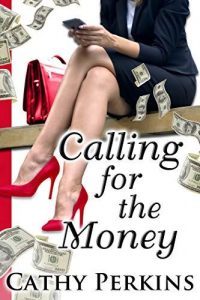
Can be read as a stand alone
Holly Price has it all—or does she?
Holly worked her way to the top of her field. Now she has the job, the money, the whole package. Behind the scenes, however, she’s wresting with a crushing workload, a backstabbing boss, a ruthless reporter, and the devastating worry she’s made a massive life choice mistake.
Then a friend goes missing and a ruthless gang is … calling for the money.
Holly must confront her past, and define her future, if she wants to save both of them.
To buy the book click on the link for Amazon.
Calling for the Money (A Holly Price Mystery)
Cozy Mystery
5th in Series
Publisher: Red Mountain Publishing (June 25, 2020)
Number of Pages ~280
ASIN: B088KV7GLL
The Interview: Main Character Holly Price
What is the title of your most recent adventure?
The fifth book in the series, Calling for the Money, released this summer.
What is your full name? Do you like the name your author gave you? Or would you give yourself something different?
I’m Holly Price and I do like my name.
How did you get involved in the current investigation? Is it your first? Or one of many?
Sometimes I wonder how I get involved in these messes, but when my family and friends are threatened, well, I can’t just sit there.
This time, oddly enough, Max Vincent’s friends are the ones who need help.
Why is that odd? Max is the son of the woman who recently broke up my parents’ marriage. I can’t completely blame her—I lay that at my father’s doorstep—but Max and I bonded over our irritation with both of them.
After Max’s friend disappears and the police won’t help, we have to keep digging until we find him—and figure out why he vanished in the first place.
Describe your favorite sidekick.
Laurie Gordon is my best friend and the one person who understands my crazy life. Unfortunately, she’s back in Washington state while I’m in California covering this massive corporate transaction. Thank goodness for cell phones.
Then of course, there’s JC Dimitrak, Franklin County detective and either the love of my life or the person I’m angriest with. Only someone who’s gotten close to me can evoke those strong emotional reactions!
Where does your adventure take place?
While most of my adventures have taken place in eastern Washington, this time the action is in Venice Beach, California.
There’s still a skateboard, druggie, surfer-dude vibe to the area, but tech companies, like my client, have quietly moved in and bought up the property. They’ve transformed it into something different. A little more upscale. A little more bland. Sad to say, no matter where you are, there are always going to be people who think the rules don’t apply to them and who create a disaster for someone else.
What is your most defining characteristic?
I’m level-headed and logical—most of the time. My family has been driving me insane with the chaos they’ve thrown into my life.
But seriously, I’m not as uptight as my author occasionally makes me seem. Rick, my chief manager back in Richland, WA, tells me I’m better with the staff than I think, but I do have to remind myself not to scare them. For some reason, they think I’m intimidating, when that’s the farthest thing from the truth.
I may be a bit driven. I’ve had a lot on my plate this past year, what with Dad having his mid-life melt-down and bailing on Mom. Dealing with his drama while I’m working outrageous hours on this California project is not improving my attitude toward him.
Rate your story: Cozy, cozy with a touch of romance, cozy with a little extra action, private eye, action-packed, leave-the-lights-on-all-night, other.
Hmm, there’s definitely a tumultuous romance going on the JC and a bit more detective action than he’d like to see in my life. Really, I’d call the books mysteries. I’m a finance person who turns into an amateur sleuth when it’s the right time to do to protect my friends and family.
What does your author have in store for you next?
I wish I knew! She really threw some unexpected personal challenges at me in Calling for the Money. There will definitely be consequences there. My author started a new series with my event-planner half-sister. Maybe I’ll wander up to the Cascade Mountains and see what Keri is doing.
Sounds like fun! Can’t wait to find out about your next escapades. Thanks for hanging out with us!
My thoughts on Calling for the Money
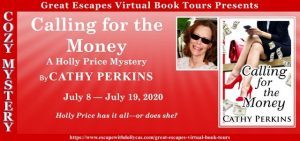
Calling for the Money is a quick, light read for anyone who likes a little romance with their amateur sleuthing.
Holly Price has everything she ever wanted. But is it everything she needs?
Fresh from a breakup with the sexy JC Dimitrak, Holly questions what she really wants out of life and the choices that have led to her current circumstances.
Temporarily located in Los Angeles for work, Holly soon becomes embroiled with the personal drama of a group of friends, including her father’s new girlfriend’s son Max. Feeling isolated in the big city, and unsure where her future lies, she reaches out to Max for a little holiday cheer, only to find herself investigating a missing person.
Things go from bad to worse as Holly uses her analytical skills to uncover the nefarious criminal network that hasn’t even gotten on the LAPD’s radar.
Throughout the puzzle of the missing person, Holly also faces her own problems, both personal and professional, as she solves the biggest mystery of all . . . what she plans to do next.
The fifth book in the series, Calling for the Money can be read as a stand alone.
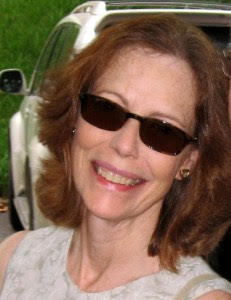
Cathy Perkins
The Author of Calling for the Money: Cathy Perkins
Cathy Perkins is the award-winning author of financial mysteries, she writes twisting dark suspense and light amateur sleuth stories.
When not writing, she does battle with the beavers over the pond height or heads out on another travel adventure.
She lives in Washington with her husband, children, several dogs, and the resident deer herd.
To learn more about Cathy, click on her name, photo or any of the following links: Facebook, Twitter, BookBub, Instagram, Goodreads, Amazon
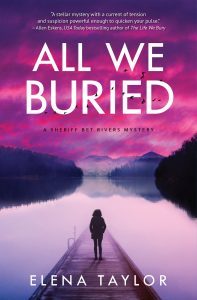 Elena Taylor is the author of All We Buried, available now in print, e-book, and audio book format at all your favorite on-line retailers. And don’t forget many independent bookstores can order books for you and have them shipped to your home or for curbside pickup.
Elena Taylor is the author of All We Buried, available now in print, e-book, and audio book format at all your favorite on-line retailers. And don’t forget many independent bookstores can order books for you and have them shipped to your home or for curbside pickup.
For more information on All We Buried, click on the link here to visit the home page.
The post Calling For The Money: Latest Mystery by Cathy Perkins appeared first on Elena Taylor.
July 1, 2020
Carlyle Labuschagne: Cover Reveal for Veiled
Carlyle Labuschagne launches the second book in her Tethered duology. Available in the Notorious Minds Boxset.
To learn more about the Notorious Minds boxset, click the link here.
The Books
For those who loved the TV show Medium . . .
Tethered: Book One by Carlyle Labuschagne
Willow receives a donor heart from a serial killer. She starts getting visions from The Devils Breath Killer . . . and sometimes his victims.
Veiled: Book Two by Carlyle Labuschagne
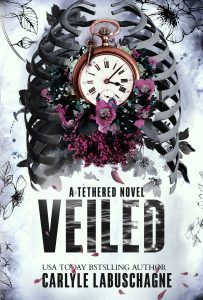 Returning home cleared of all charges Willow is welcomed by press, politicians and old high school friend and bullies alike. During her opening speech a vision strikes, hard and fast. She falters, her fingers find a pen and she start scribbling and sketching like a mad thing.
Returning home cleared of all charges Willow is welcomed by press, politicians and old high school friend and bullies alike. During her opening speech a vision strikes, hard and fast. She falters, her fingers find a pen and she start scribbling and sketching like a mad thing.
The humiliation is bad enough to send her running, but what she sketched is about to change the life she fought so hard for and the freedom from the serial killer that still haunts her.
The sketch is the same as the one that led her on the path to The Devils Breath Killer, with one faint detail that differs. Within the cage, made of ribs, tied to the human heart it houses a key, a key she recognizes from somewhere but cannot recall.
She tries to tell everyone the Cult has followed to her home county, and the killing will start soon, but no one will listen except the same FBI agents and her sister who had run from the law the last time.
This time they are in a third world country with none of the resources they need at their disposal to prove their case. The clues keep coming, and pieces of human bone gets sent to her, with taunting clues and keys to find and stop the killer – with each bone, another victim has been claimed.
And should the bone puzzle be complete – everyone she loves will die.
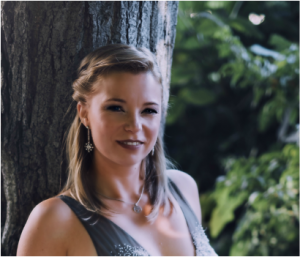 The Author: Carlyle Labuschagne
The Author: Carlyle LabuschagneCarlyle Labuschagne is a South African USA Today Bestselling, award wining, and international bestselling author with a flair for mixing genres and adding loads of drama to every story she creates.
She has traveled the world with her books in hopes of connecting with all kinds of book loving people, to learn as much as she can from other book cultures with the hopes of bringing the knowledge back to her home country.
For now she is happy to take over the world and convert non Sci-fi believers.
Her goal as an author is to touch people’s lives, and help others love their differences and one another by delivering strong messages of faith, love and hope within every outrageous world she writes about.
To learn more about Carlyle, click on her name, photo or any of the following links: Facebook, Twitter, Goodreads, and Instagram
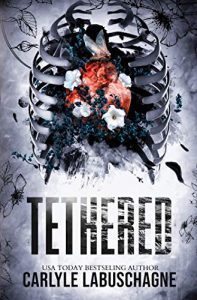 To buy Tethered, click the link here.
To buy Tethered, click the link here.Tethered follows two sisters, Willow and Raine Viviers alongside two rogue FBI brothers on what seems like an impossible task to solving a dead end case.
With no leads, and a corrupt government cover up, their time is running out to stop the spread of a Serial Killer Cult before another victim is claimed.
But they have a secret weapon…
Willow is a young adult who has just undergone a heart transplant who’s trauma has changed her. She’s gained a strange supernatural gift – she can see into the heart of the Devil’s Breath Killer.
 Elena Taylor is the author of All We Buried, available now in print, e-book, and audio book format at all your favorite on-line retailers. And don’t forget many independent bookstores can order books for you and have them shipped to your home or for curbside pickup.
Elena Taylor is the author of All We Buried, available now in print, e-book, and audio book format at all your favorite on-line retailers. And don’t forget many independent bookstores can order books for you and have them shipped to your home or for curbside pickup.
For more information on All We Buried, click on the link here to visit the home page.
The post Carlyle Labuschagne: Cover Reveal for Veiled appeared first on Elena Taylor.
June 28, 2020
New Normal: 5 Reasons to Stop Using That Term
New Normal is an expression getting bandied about quite a bit these days, and it always sets my teeth on edge. Language is a powerful force and how we use it changes our perceptions of the world we live in. I’m not an epidemiologist nor a economist nor a sociologist, but I am a wordologist, so let’s all take a breath before we accept that statement as accurate for our situation.
Wondering about some writerly ways to get through the pandemic? Read my post on #WeWriteThrough by clicking the link here.
Here are five reasons I think everyone needs to stop using the term “New Normal” as it relates to our current pandemic and economic state. Feel free to take them with a grain of salt, but just take them . . .
1. Pandemics End: It’s not a new normal if it ends.

This too shall pass . . .
I know it doesn’t feel like it.
I’ve been on lockdown since March 15, and there are others for whom the lockdown has been even longer. That’s a long time to live under these conditions.
It’s stressful. We are worried about our families and friends and communities. We have lost people to this disease, and will lose more before it’s over. Businesses are folding and people are losing their jobs.
But none of that makes this situation permanent on a global scale.
The H1N1 pandemic of 1918 lasted not quite two years. 500 million people were infected and 50 million died. It mostly ended through social distancing (quarantine) and hand washing. It did not become the new normal.
The Black Death, or Bubonic Plague of 1347-1353 killed an estimated 75-200 million people in Europe. It probably ended through social distancing. People stayed home until the virus died out. It did not become the new normal.
The Rona is not permanent.
To put the current pandemic into a visual perspective, click the link here.
2. Your New Normal Isn’t Everyone Else’s New Normal.

Equal doesn’t mean identical
We may be “in this together” but we are not experiencing the same thing. To state that this is the “new normal” makes everyone’s experience identical, and that’s simply not true.
Some of us work from home, don’t have children in school, and are able to socially isolate with minimal interference to our daily lives.
For others, their entire job sector has virtually disappeared overnight, with minimal success to move things online.
Some of us don’t know a single person who has come down with COVID-19, and others have lost entire families to the disease.
The situation is not impacting every socio-economic, ethnic, or racial group the same. So, which “normal” are we proposing with this statement?
To learn a little about what the Native American community is dealing with in the United States, click the link here.
Normal is a subjective word but it’s being used objectively.
Merriam-Webster defines normal as: conforming to a type, standard, or regular pattern.
We cannot at this point, discuss anything about the pandemic as fitting this definition.
If everyone’s “new normal” is different, then how can we talk about the current situation as being objectively conforming to a type or standard?
If you want a little comparison, take a look at how Sweden approached the pandemic. How does your “normal” compare to the people living there?
3. New Normal accepts the increase in domestic violence, suicide, and drug and alcohol addiction as permanent.
There has been a spike in domestic violence, suicide, and addictive behaviors. Vulnerable people are more impacted by isolation. To call our current situation the new normal takes their temporary isolation and makes it “how things are”. In my opinion, this minimizes an individual’s autonomy to seek out help.
It also supports the premise this is how things will continue to be, rather than showing those who are suffering that there is hope. That we will return to a non-pandemic society or that help is out there now, even before the pandemic ends.
Rather than using the term new normal, let’s keep things framed around the pandemic situation and seek answers for the most vulnerable in our communities who suffer most.
These are all US resources, but a quick Google search will help you find assistance anywhere in the world.
Suicide Hotline
Domestic Abuse Hotline
Drug and Alcohol Addiction Hotline
4. Things are Changing Rapidly in our Understanding of the Coronavirus and COVID-19

Things will be different in a week, a month, a year . . .
What we knew in March is not what we know now. If we define normal as standard or a regular pattern, that’s not how things are currently functioning. There is no uniform response to the pandemic, by country or state or county.
Scientists are working around the clock to advance a vaccine or a cure. Both appear to be possible within the next 12-18 months (and I’m being cautious with my estimate, it could happen sooner).
With the potential for a cure or vaccine available before the end of 2021, then things will once again, change very rapidly. We will return to public events and gatherings. Travel will recommence. The economy will recover. Even if it doesn’t look the same as it did pre-pandemic, it will not remain as it is today.
5. This recession is unlikely to rebound in the same way previous recessions have rebounded in recent years.

This is not the Dust Bowl
This brings me to my last point. Yes, people have suffered and will continue to suffer, but this is not the Great Depression, which started in the United States in 1929 and lasted the better part of a decade. There are similarities, with devastating unemployment and terrifying personal economic realities. But the causes and recovery are unique in this situation.
Economists recognize businesses will reopen. New businesses will arrive to replace those that have failed. Other businesses are surviving online and remotely, protecting assets and employees, and will continue to modify their business models as the pandemic ends.
But even if this was the second Great Depression, remember that that too, ended. It did not become the new normal. It did force economic and business changes and illuminated the very real dangers of human impact on the environment, but it did not remain a permanent situation.
Yes, we need to deal with climate change, but that would be true regardless of the pandemic. They are related, but separate issues.
We are in a challenging and difficult time. But this is not our permanent experience.
It may be that business travel never returns in full force. People may choose to work remotely from now on, and companies may do what they can to facilitate their employees working from home, saving on office space, travel, and other costs.
But those aren’t bad things. They are part of the evolution of a society.
None of us can say for certain how long the pandemic and its repercussions will last, and what impacts will be permanent, but one thing is true. Human beings are resilient. We can get through this. As a group. As a whole. Especially if we protect the most vulnerable among us and think of everyone on the street as worthy of our respect and support.
My final thoughts on the concept of New Normal

A brighter future
As a writer, I feel that identifying our current situation as a permanent one does a disservice to our communities. It removes hope for those who are despondent. It promotes the idea that bad situations are permanently part of who we are. That would be an excuse not to look for answers. Further, it encourages people to stop trying to survive a short term event, when that is what we may need to focus on most.
In the short term, we can social distance, wash our hands, and stay home if we’re sick.
We can come together to make a brighter future.
As for the long term, we aren’t there yet, so let’s stop talking as if we are.
Stress Photo by The Digital Artist on Pixabay.
Globe/doll photo by Alexas_Fotos on Pixabay.
Scientist image by Gerd Altmann on Pixabay.
Abandoned shed by Siggy Nowak on Pixabay.
Bright future photo by wondermar on Pixabay.
The post New Normal: 5 Reasons to Stop Using That Term appeared first on Elena Taylor.
June 23, 2020
The Corpse With the Crystal Skull: Review
 The Corpse with the Crystal Skull
The Corpse with the Crystal Skull
Welcome to the Great Escapes Virtual Book Tour for the latest Cait Morgan Mystery.
Visit all the stops along the tour to learn more about Cathy Ace and her most recent release.
Love your mysteries cozy? Find out about Cynthia Kuhn and The Study of Secrets, click the link here.
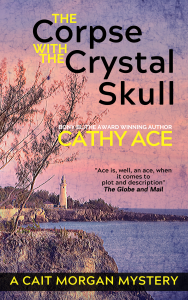
Readable as a standalone
The Corpse with the Crystal Skull by Cathy Ace
Welsh Canadian globetrotting sleuth, and professor of criminal psychology, Cait Morgan, is supposed to be “celebrating” her fiftieth birthday in Jamaica with her ex-cop husband Bud Anderson.
But when the body of the luxury estate’s owner is discovered locked inside an inaccessible tower, Cait and her fellow guests must work out who might have killed him – even if his murder seems impossible.
Could the death of the man who hosted parties in the 1960s attended by Ian Fleming and Noël Coward be somehow linked to treasure the legendary Captain Henry Morgan might have buried at the estate?
Or to the mission Bud and his secret service colleagues have been sent to the island to undertake?
To buy the book, click any of the following links: Amazon and Kobo
Cozy Mystery
9th in Series
Publisher: Four Tails Publishing Ltd. (June 29, 2020)
Print Length: ~300 pages
Digital ASIN: B086FVBTTN
My Thoughts on The Corpse with the Crystal Skull
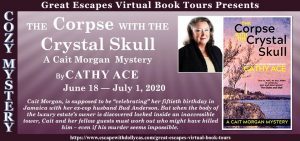
The Corpse with the Crystal Skull is a delightful addition to Cathy Ace’s Cait Morgan series.
Cait Morgan makes for a terrific protagonist, witty, clever, and deftly human in her insecurities, she uses her training in criminal psychology and eidetic memory to help solve a murder that stumps the local police, not to mention Cait’s husband and his cohorts who are visiting Jamaica for more than just a little R and R.
The supporting characters are equally engaging. My enjoyment of this book came as much from the dynamics between the characters as unraveling the whodunit, though it’s a twisty and complex mystery to complement the fun characters.
Cathy Ace has a sharp ear for dialogue, a knack for creating appealing characters, and a deft hand at crafting a satisfying plot. Her characters struggle with aging, relationships, marriages, past traumas, and issues of class, making for an excellent exploration into the human condition—augmenting the clever murder investigation.
Set on a posh, private estate in Jamaica, the location adds another level to the story as Ace shows us the vast differences between the “haves” and “have nots” on the island. A mysterious missing treasure, a locked tower, and a reclusive Italian movie star all add up to a fun summer read.
If you aren’t familiar with Cathy Ace’s Cait Morgan Series, this book will have you dying to pick up book one.
About the Author of The Corpse with the Crystal Skull
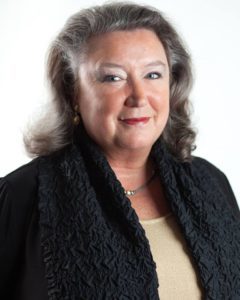
Cathy Ace
Cathy Ace’s Welsh Canadian criminal psychologist, and foodie, sleuth Cait Morgan encounters traditional, closed-circle whodunits around the world, while her WISE Enquiries Agency Mysteries feature a quartet of soft-boiled female PIs who solve quintessentially British cases from their office at a stately home in Wales.
Her standalone novel of psychological suspense, The Wrong Boy, became an amazon #1 bestseller.
Shortlisted for Canada’s Bony Blithe Award three times in four years, winning in 2015, she’s also won an IPPY Award, and has been shortlisted for an Arthur Ellis Award. Cathy lives in Canada, having migrated from her native Wales aged 40.
To learn more about Cathy, click on her name, photo or find her on Facebook, Twitter, and Goodreads.
 Elena Taylor is the author of All We Buried, available now in print, e-book, and audio book format at all your favorite on-line retailers. And don’t forget many independent bookstores can order books for you and have them shipped to your home or for curbside pickup.
Elena Taylor is the author of All We Buried, available now in print, e-book, and audio book format at all your favorite on-line retailers. And don’t forget many independent bookstores can order books for you and have them shipped to your home or for curbside pickup.
For more information on All We Buried, click on the link here to visit the home page.
The post The Corpse With the Crystal Skull: Review appeared first on Elena Taylor.
June 21, 2020
Three Writing Craft Concepts for Authors of any Genre

Understanding writing craft concepts and a writer’s ability to apply them to their work can be the difference between a published manuscript and another draft hidden in a drawer.
As a developmental editor, I read a lot of unpublished work. The drafts vary in their “finishedness”. Some are almost ready to query, while others are in a first draft state and need to be torn down and rebuilt from the ground up.
Any of these manuscripts could end up published. Any of these manuscripts could fail. Many different things need to fall in place for a manuscript to find an agent or a publisher.
But here’s three writing craft concepts that writers can use to improve the chances that their manuscript will cross the finish line.
Writing Craft Concept Number One
Characters Need Objectives
We all want something. Everyone has a goal. This is what we call an “objective.”
I had an objective when I sat down to write this. My objective was to write a useful blog post that would help writers improve their craft. It’s also true that I want to promote myself as an editor and an author, but those are secondary. My primary objective here is to help writers improve their craft. That’s what we would call a super-objective.
If characters don’t actively want something, they don’t need to act.

Goal!
Each paragraph or section has its own objective. For example, in this post, the opening introduces the reader to what the blog will cover. Each section provides information about a different aspect of the writing craft. The section at the end tells you about my most recent novel and how to find out about my editing services.
Just like I have a super-objective for the overall post, and smaller objectives in each section, your characters have an overall objective for the entire arc of the story and each chapter or scene has smaller objectives, which all lead toward the larger objective.
Manuscripts filled with characters that lack objectives tend to wander. If characters don’t actively want something, they don’t need to act. Manuscripts are built on characters wanting something, acting on that want, and failing to achieve the super-objective until the end.
The super-objective and the objectives of each scene propel the characters through the story. The protagonist drives the action of the scenes by working toward their super-objective. It’s what gives a story its sense of forward momentum.
Writing Craft Concept Number Two
Stories Have Throughlines
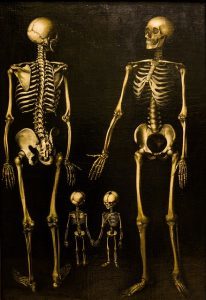
The thigh bone’s connected to the knee bone . . .
Similar to having a super-objective, which drives characters through a story, the story itself needs a throughline, which drives readers through the manuscript. What is the overall point of this specific manuscript? Is there a big question the author sets out for the reader and how is it answered by the end? Does every scene in the manuscript connect to the spine? Making the overall story feel active and focused?
Just as characters need objectives, the manuscript has objectives too. Whether to inform, entertain, shock, or amuse, a manuscript takes a position. It tells a story for a reason.
One way to think about this concept is what I call the “Big Question.” Every story asks a question at the beginning, which is answered by the end. It could be who killed Jane Doe or will John Doe survive being lost in the wilderness? It could be will Jane Doe rise to the top and become the first female CEO of the company or will John Doe finally find true love?
Regardless of the genre, something is asked in the beginning, which is answered by the end.
Another way to think about this is to imagine a spine. Every part of the body is connected to the spine. Every scene in the manuscript is connected to the spine, and just as the leg moves the body, the scene moves the manuscript by impacting other parts of the total picture.
Writing Craft Concept Number Three
Stories Require Action

The Viewing Place
A lot of people talk about show versus tell with regards to the craft of writing. This concept can also be understood as action versus description. Do we see characters act or are we told what they do? Do we see characters react to events or are we told how they react?
Description has its place in storytelling. But it can’t replace active scenes. Think of description as filling out the manuscript. Description is the side dish to the main course. Description helps us see the world where the action takes place. It gives readers a complete picture of what the environment look, smells, tastes like. It provides readers a more complex understanding of the experience.
But it doesn’t take the place of the active events. Each event forces a reaction. Character A does something, to which Character B must respond. Repeat.
The more a writer can show action rather than tell, the stronger the overall narrative.
Long ago, when theatre first started up formally in Greece, the word “theatron” joined the lexicon, from which we get the modern word “theater”. It meant “viewing place”. In other words, it was where the audience sat so they could see events. They did not call it the “hearing place”. Drama requires action. We want to see what people will do just as much as we want to hear what they say.
There’s a lot more to writing than just these three writing craft concepts, but these three are ones I consider crucial for strong storytelling. Hopefully I’ve met my super-objective and this was a useful blog with concepts you can apply to your writing!
Want to learn more about the craft of writing?
Join me every Wednesday at 9am PST for a writing workshop. Click the link here to register for the upcoming event.
 Elena Taylor is the author of All We Buried, available now in print, e-book, and audio book format at all your favorite on-line retailers. And don’t forget many independent bookstores can order books for you and have them shipped to your home or for curbside pickup.
Elena Taylor is the author of All We Buried, available now in print, e-book, and audio book format at all your favorite on-line retailers. And don’t forget many independent bookstores can order books for you and have them shipped to your home or for curbside pickup.
For more information on All We Buried, click on the link here to visit the home page.
Interested in working with Elena? Visit Allegory Editing for more information. Click the link here.
Pencil photo on Pixabay.
Skeleton photo on Pixabay.
Goal photo on Pixabay.
Greek Theatre on Pixabay.
Header photo on Pixabay.
The post Three Writing Craft Concepts for Authors of any Genre appeared first on Elena Taylor.
June 10, 2020
Undercard Thriller Author David Albertyn Guest Blogs
“David Albertyn’s fast-paced thriller combines a dynamic plot and compelling characters to deliver a one-two knockout punch. Undercard is not to be missed.” — Elena Taylor, author of All We Buried
It was my honor to write a blurb for this fabulous novel by author David Albertyn. I’m even more thrilled to have him on my blog today as a guest blogger to coincide with the US release and Audio launch of his dynamic debut.
Sometimes writing echoes life and sometimes life echoes writing, read David’s post about the extraordinary events surrounding the writing and publishing of Undercard.
To read more about David, catch my interview with him during the international launch of his debut novel Undercard, click the link here.
Timing
By David Albertyn
On Tuesday, June 2, my debut novel Undercard, came out in the United States. The book takes place over 24 hours in Las Vegas and follows four estranged childhood friends all back in their hometown on the same day, their lives converging and conflicting. It deals with boxing, casinos, corrupt cops, and revenge. It also deals with the police killing of an unarmed Black teenager and a protest against the not guilty verdict of the cop in question, Keenan Quinn, one of the four main characters.
Undercard came out in Canada over a year ago. It came out in Germany in December. And in France in March. But it came out in America, where the novel is set, a week ago, on Blackout Tuesday.
Undercard came out in Canada over a year ago. It came out in Germany in December. And in France in March. But it came out in America, where the novel is set, a week ago, on Blackout Tuesday.
The timing is uncanny.
There is an inherent insecurity in almost every writer, I believe, when they expose their work to the world, regardless of what that work contains. One of the skills a writer must develop is a thick skin, and also a detachment of sorts to their writing once it is its own book, open to the interpretation and judgement of anyone who picks it up. But I imagine there are levels to this.
It is a strange experience having a book release you have been building toward for a year and a global pandemic hits right before the culmination. It is even more strange to be a white writer who has tried, within the context of a riveting thriller, to tackle the issues of inequality and excesses of power, and by extension racial injustice and how police and security forces are used to divide cities, and then all these issues are thrust into global prominence right as the book hits its largest release.
In October of 2017, my agent and I had a meeting lined up with a publisher to talk about possibly acquiring my manuscript Undercard .
In October of 2017, my agent and I had a meeting lined up with a publisher to talk about possibly acquiring my manuscript Undercard. I had been submitting novels to publishers for five years at that point, all to no avail. This was the first time I had a meeting with a publisher, and other than acquiring my agent, it was the biggest opportunity of my professional life.
So far everyone had responded to my new novel Undercard, which contained in it a scene where a sniper shoots out of a Las Vegas casino resort hotel room window onto a crowd of people below. This time things would be different. This time I would cross that threshold and become a published author.
Four days before this meeting, I saw my mother in the morning and she was weeping like I had rarely seen. My heart froze. I thought, which of our relatives has died? She said there has been a mass shooting in Las Vegas. The worst one yet. And it’s exactly like your book.
It is strange to write a scene of violence and then have that scene play out in real life in almost exactly the same way, only instead of two people being killed, like in your scene, 58 are dead.
I spent the rest of the morning reading and watching the news, and like my mother I wept. It is strange to write a scene of violence and then have that scene play out in real life in almost exactly the same way, only instead of two people being killed, like in your scene, 58 are dead.
A mass shooting is always a tragedy, even if there is a distance between you and it. But somehow, having written this scene and then have it play out so atrociously, I felt connected to this terrible event in a way I hadn’t with the others. I questioned my role as a writer. What did it mean to write scenes of violence? What did it mean when that violence occurred in a story meant to entertain people? I couldn’t entirely pinpoint nor articulate the strange new emotions that came over me.
The publisher wanted the book but believed that we had to change this scene, as everyone would assume it was a reference to the Vegas mass shooting and not written prior. I agreed with them, and from a stylistic and story perspective I prefer the scene that has replaced it. I signed with them and realized my dream of becoming a published author.
Now in another crucial professional moment, Undercard again resembles the biggest story in the world.
Now in another crucial professional moment, Undercard again resembles the biggest story in the world. And again I find myself experiencing strange feelings that I cannot fully decipher. Again I question my role as a writer. It feels strange, in this moment, to publicly discuss what the book is really about, beyond its more entertaining aspects, but it would also feel strange to shy away from the connections to the present Black Lives Matter movement that are so plain to see, a movement that I have been researching and have believed in for years.
I’m not a believer in fate, even if it does feel like there is something connecting this book, my life, and the entire world. I have been writing about the need for greater equality in the world since the 2000s, and I believe that it is only a coincidence that it took this long for my writing ability to develop enough to be published in this time.
So I suppose what I am trying to say is that it is a strange and uncertain thing to be a writer. But no matter how strange or uncertain, I still believe that there is great value, even a responsibility, to engage with issues of real importance in novels. Even thrillers.
The Author
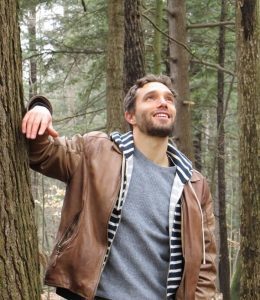
David Albertyn
David Albertyn was born in Durban, South Africa in 1983. His father was involved in the anti-apartheid struggle, and for his efforts was served a banning order by the apartheid government for five years. From a young age David learned the importance of standing up to injustice even if you are not on the receiving end of that injustice.
David began writing stories when he was six years old. In his final years in South Africa he was taken by Tolkien and Greek and Norse myths. In Canada he was introduced to Michael Crichton and Frank Herbert. David read, and re-read, these early influences voraciously, trying to emulate the thrills, wonder, and vast scope he experienced in these stories in his own writing.
At Queen’s University, pursuing a Film Studies major, he enrolled in creative writing courses that significantly developed his writing ability. His writing was further developed in the Humber School for Writers’ Creative Writing program, where he received a Letter of Distinction.
As an adult he was inspired by the content of works by Chinua Achebe and Ngũgĩ wa Thiong’o, and the style of works by Hilary Mantel and JM Coetzee, while trying to maintain the entertaining, dynamic, and epic qualities of his earlier influences. David’s goal is to write visceral stories that are both thrilling and meaningful.
To learn more about David, click on his name, photo or any of the following links: Goodreads, Facebook, Instagram, Twitter, and LinkedIn
Undercard: Also available in Audio!
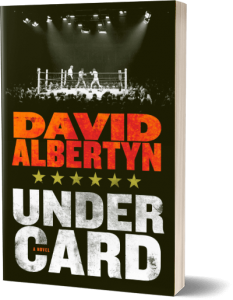
Debut Novel
When Tyron Shaw returns to his hometown of Las Vegas after eleven years in the Marines, he’s surprised to discover that two of his best friends from childhood are all anyone is talking about: Antoine Deco, three years out of prison, hasn’t lost a boxing match since his release, and tonight is fighting in the undercard to the fight of the decade; and Keenan Quinn, a police officer who killed an unarmed teenager and escaped punishment from the courts, is the subject of a protest tomorrow morning.
Tyron has trouble reconciling either story with his memory of these men, and the situation escalates when he runs into the love of his life, Naomi Wilks, a retired WNBA player, basketball coach, and estranged wife of Keenan. As Tyron reconnects with his old community, he will learn over the next twenty-four hours that much has changed since he left Las Vegas . . . and there is much more that he never understood.
To buy the book, click on any of the following links, or order from your favorite bookstore: Amazon, Amazon Canada, Barnes & Noble, Indigo, and IndieBound
 Elena Taylor is the author of All We Buried, available now in print, e-book, and audio book format at all your favorite on-line retailers. And don’t forget many independent bookstores can order books for you and have them shipped to your home or for curbside pickup.
Elena Taylor is the author of All We Buried, available now in print, e-book, and audio book format at all your favorite on-line retailers. And don’t forget many independent bookstores can order books for you and have them shipped to your home or for curbside pickup.
For more information on All We Buried, click on the link here to visit the home page.
The post Undercard Thriller Author David Albertyn Guest Blogs appeared first on Elena Taylor.
May 31, 2020
Clare Carlson Returns in R.G. Belsky’s The Last Scoop
Clare Carlson is the journalist and amateur sleuth in R.G. Belsky’s terrific series. I’m thrilled to have R.G. on my blog this week talking about the third book in the series, his other projects, and what’s next for his hard working heroine. Read through to the end to find out how I appear in the The Last Scoop!
Don’t miss my last interview with R.G. for his previous novel, Below the Fold, click the link here to read.
The Author
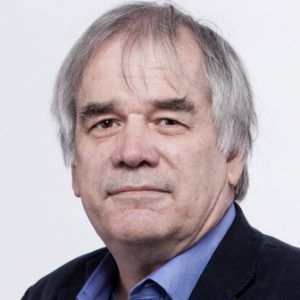
R.G. Belsky
R.G. Belsky is a former managing editor at the Daily News and writes about the media from an extensive background in newspapers, magazines and TV/digital news. He has also been a top editor at the New York Post, Star magazine and NBC News.
Previous books in the Clare Carlson Series include: Yesterday’s News and Below the Fold. He also wrote the Gil Malloy Series, about a newspaper reporter at the New York Daily News and writes under the pen name, Dana Perry.
For more information about R.G., click on his name or photo or any of the following links: Twitter, Facebook, and Instagram
The Book: Clare Carlson #3
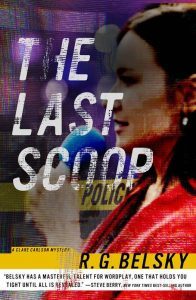
Book Three
The scariest kind of serial killer—one you don’t know exists
Martin Barlow was Clare Carlson’s first newspaper editor, a beloved mentor who inspired her career as a journalist. But, since retiring from his newspaper job, he had become a kind of pathetic figure—railing on about conspiracies, cover-ups, and other imaginary stories he was still working on. Clare had been too busy with her own career to pay much attention to him.
When Martin Barlow is killed on the street one night during an apparent mugging attempt gone bad, it seems like he was just an old man whose time had come.
But Clare—initially out of a sense of guilt for ignoring her old friend and then because of her own journalistic instincts—begins looking into his last story idea. As she digs deeper and deeper into his secret files, she uncovers shocking evidence of a serial killer worse than Son of Sam, Ted Bundy, or any of the other infamous names in history.
This really is the biggest story of Martin Barlow’s career—and Clare’s, too—as she uncovers the path leading to the decades-long killer of at least twenty young women. All is not as it seems during Clare’s relentless search for this serial killer. Is she setting herself up to be his next victim?
Clare Carlson is perfect for fans of Sue Grafton’s Kinsey Millhone and Sara Paretsky’s V.I. Warshawski
To buy the book, click on any of the following links: Amazon, Barnes & Noble, IndieBound, Books-A-Million, iBook, Kobo, and Google Play
The Interview
The Clare Carlson Mysteries center on a TV journalist-turned-amateur-sleuth. As a professional journalist yourself, with years of experience in print, online, and TV, what kinds of changes do you have to make to the “reality” of the journalism world to keep your books so dynamic and engaging?
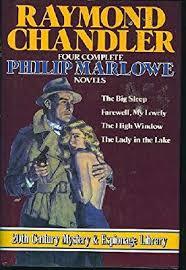 My advice is always keep it real, but not too real, that’s pretty much the way I feel.
My advice is always keep it real, but not too real, that’s pretty much the way I feel.
Yes, I draw on my journalistic background to provide a lot of real newsroom details in The Last Scoop and my other mystery novels. Especially the intensity, the energy and craziness of reporters chasing after a sensational headline story.
But much of it is not totally true to life because this is a murder mystery—not a “how to” guide for journalists. Like I said [at a recent book event], I never have heard of a journalist who singlehandedly solved a murder case—but Clare, like so many other fictional protagonists, does that in every book. So she is not a “real” character —but she is based on real people and events I have experienced in newsrooms.
One final thing: I always loved the Raymond Chandler story on this topic. A reviewer once criticized Chandler’s iconic Philip Marlowe character as being “unrealistic” as a private investigator. “No real life private gets hit over the head with a sap every time he walks into a room or has a beautiful blonde client regularly coming to his office.” That’s right, Chandler replied, Philip Marlowe is not a realistic private investigator. “But if I wrote about what a real private investigator does all day, no one would read the books.” As usual, Chandler said it perfectly.
“A number of the reviews for The Last Scoop have said that it can be read easily as a stand-alone —but the references to previous books made the reviewer want to go back and read them too.”
The Last Scoop is the third in the series but can also be read as a stand-alone. How do you approach writing a series so that you can provide continuity for your previous readers, but also appeal to readers starting with a later book?
Each book is meant to be read as a stand-alone, and I think I’ve accomplished that. The story—and the plot line—is individual for the book. It all starts and ends with the pages of that novel.
Where it gets trickier is the back story of Clare, involving her personal life. I need to write about that in a way which indicates previous things have occurred in the earlier books—but not necessarily requiring the reader to go back to those books to understand.
A number of the reviews for The Last Scoop have said that it can be read easily as a stand-alone —but the references to previous books made the reviewer want to go back and read them too.
Now that’s what an author like to hear!
Clare’s mentor Martin Barlow launches events in The Last Scoop, did you have a mentor like Martin? Or have you mentored younger journalists like Clare?
Yes, to both questions, Elena. I’ve had mentors like Martin Barlow and I’ve tried to mentor a number of younger journalists after all my years in the New York City media.
The difference is I never had a single mentor like Barlow was with Clare, I had MANY of them. It would be difficult to pick out just one editor who helped my career like that. There were many along the way, and I tried to learn from each—and then pass it on to other people who worked under me when I was an editor.
I suppose you could say I was writing about myself a bit when I created the Martin Barlow character of an old journalist. Except I’m not as crazy as he was!
So, what or who was most influential in your decision to become a journalist?
In terms of whether or not any mentor was influential in my decision to become a journalist, well…that never happened. I knew I wanted to be a journalist when I was a young boy growing up. I was never sure why (maybe it had something to do with watching Clark Kent as a reporter on the Superman TV show). But I always knew what I would do for a career. And I never regretted that decision.
You write excellent female protagonists. I’m curious, do you try to write them in how you understand women think and act? or do you write them as characters who just happen to be women? I’m wondering how Clare Carlson would have been different if you’d written her as a male character?
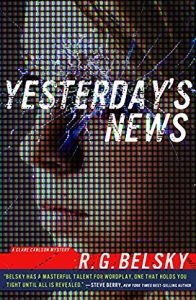
Book One
Clare could never have been a male character because the plot of the first Clare Carlson book, Yesterday’s News, is directly related to her being a woman. That book was originally planned to be a stand-alone. But people liked her enough for me to continue writing Clare as a series. So that’s why she’s a woman.
Having said that, I’ve always like writing women characters. I’ve written 14 novels, and 10 of them have featured a female protagonist. In many ways I find writing a female character more interesting than writing a traditional male character. Especially as a journalist, where women have traditionally had to fight harder than men to be taken seriously as hard news reporters. That provides a lot more opportunity for writing more conflict—and more drama—in a novel.
My writing of female characters goes all the way back to the first novel I wrote a long time ago. I started out by using a male reporter character to solve a murder mystery. When I showed an early draft of it to a woman I knew who worked in publishing, she said it was okay. But then she suggested: “What if you made that reporter a woman? That might be really interesting!” I did and the book just seemed to come alive for me at that point.
So I do write both men and women protagonists (my last series featured a male reporter named Gil Malloy) —but I really enjoy writing about a woman like Clare.
Tell us about Dana Perry.
Dana Perry is a pen name of mine.
I’ve written two thrillers under the Dana Perry name now—The Silent Victim (in the fall of 2019) and The Golden Girl (coming in early June). Both of these books feature a New York City newspaper reporter named Jessie Tucker. Jessie is like Clare in some ways, yet also very different. But if you like Clare, I think you’ll like Jessie too.
I’m also going to be doing two new Dana Perry thrillers (with a different character) for 2021.
Why the Dana Perry pen name? It’s basically a marketing decision. Hopefully, it doesn’t confuse too many people. But Dana Perry and R.G. Belsky are the same person!
“I just completed a new Clare Carlson mystery…”
What are you working on now?
I just completed a new Clare Carlson mystery (#4) called BEYOND THE HEADLINES. It will be published in the spring of 2021.
This one is about a billionaire businessman who marries a glamorous celebrity, and then is found murdered. Did the celebrity kill him for his money—or is she being framed for the murder by other people trying to get their hands on his estate? That’s the question Clare has to deal with in BEYOND THE HEADLINES.
The sensational story takes her out to Hollywood and even back 50 years ago to the end of the Vietnam war in her search for answers.
At the same time, she continues to deal with a myriad of issues in her personal and romantic lives which is still…well, complicated.
As readers of the series well know, Clare is a terrific journalist—but the rest of her life is pretty much of a train wreck.
“…nothing good can happen until you start getting words down on your computer screen.”
Final words of wisdom for aspiring writers:
Oh, I’ve been asked this question by so many aspiring writers.
And the answer is so simple:

You heard the man, WRITE!
WRITE!
That’s really what it’s all about. Sitting down and writing that novel or short story or screenplay you’re always talking about doing. It’s not easy to do. But nothing good can happen until you start getting words down on your computer screen. They might not be good, but you can always deal with that later. The worst thing is to have a blank screen in front of you.
Sadly, many people don’t take this advice.
They tell me after reading one of my books—I’m sure you and many authors have this same experience, Elena—that they’re going to write a novel too. Then, a year later or so when I ask them about it, they haven’t written a word.
So once again, my basic advice for an aspiring writer is:
WRITE!
All the rest will come after that.
Bonus question – so you know I have to ask, I LOVE Terri Hartwell’s character in The Last Scoop, was I the inspiration for her or was my last name already on your radar in other ways? (For those of you who don’t know, Taylor is a pen name, Hartwell is my real last name).
Ha! I wish I knew the answer to that.
Coming up with interesting and different character names is always a challenge for me, and I guess I must have simply liked the name Hartwell once I met you. But it was not a conscious decision. It probably was just floating around in my head.
The same thing happened with our author friend Jim Nesbitt. I have a character in the Clare novels (a minor one) with the last name of Nesbitt. I didn’t even realize that until the real Nesbitt read one of my books and pointed that out. Just like you with Hartwell. Again, I didn’t realize I was doing that when I wrote the book.
On the plus side, Terri Hartwell is a pretty interesting (and likable) character in The Last Scoop.
I’ve accidentally used the names of other friends on more unsavory characters.
Now Elena is a pretty cool name too—maybe I should figure out a way to use that for one of my characters in the next Clare Carlson book!
YES! I’d love a character named Elena in an upcoming Clare Carlson book! I’m even okay with her being “unsavory” that might be kind of fun. I’ll be keeping an eye out for this new character!
Writing photo from Pixabay.
The post Clare Carlson Returns in R.G. Belsky’s The Last Scoop appeared first on Elena Taylor.
May 27, 2020
Cynthia Kuhn Launches The Study of Secrets
Cynthia Kuhn, award winning author of the Lila Maclean Academic Mysteries, has done it again. Don’t miss her latest installation in this terrific series.
Love academic cozies? Click the link here to read about author Mary Angela and Coming Up Murder.
The Author: Cynthia Kuhn
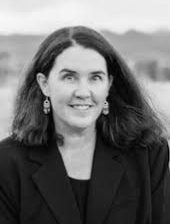
Cynthia Kuhn
Cynthia Kuhn writes the Lila Maclean Academic Mystery series: The Semester of Our Discontent, The Art of Vanishing, The Spirit in Question, The Subject of Malice, and The Study of Secrets.
Her work has also appeared in Mystery Most Edible, McSweeney’s Quarterly Concern, Literary Mama, Copper Nickel, Prick of the Spindle, Mama PhD, and other publications.
She is professor of English at Metropolitan State University of Denver, where she teaches literature, writing, and film. In addition, she blogs with Chicks on the Case and is a member of Sisters in Crime, Mystery Writers of America, International Thriller Writers, and the Short Mystery Fiction Society.
To learn more about Cynthia, click on her name or photo or any of the following links: Facebook, Twitter, Bookbub, and Goodreads
“Author Cynthia Kuhn is phenomenal at conveying the tension-filled atmosphere that inundates higher institutions…” — Kings River Life Magazine
The Book
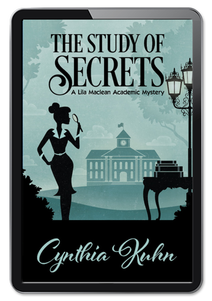
Book Five
“The Study of Secrets hooked me on page one.” —Annette Dashofy, USA Today Bestselling Author of the Zoe Chamber Mystery Series
There could be nowhere more fitting for English professor Lila Maclean to spend her sabbatical than in a proper Victorian mansion. The whimsical Callahan House seems to have materialized from the pages of the mystery novels she is researching, with its enchanting towers, cozy nooks, and charming library.
Unfortunately, it also features a body in the study.
Residents of Larkston have long believed that the Callahan family is cursed—the murder on the estate sets the town buzzing. Wild rumors are fueled by a gossipy blogger who delights in speculation, and further crimes only intensify the whispers and suspicions.
A newly discovered manuscript, however, appears to expose startling facts beneath the fictions. When Lila steps in to sort the truth from the lies, it may cost her everything, as someone wants to make dead certain that their secrets stay hidden.
To buy the book click on any of the following links: Amazon, Barnes & Noble, Bookshop, IndieBound, iTunes, and kobo
 Elena Taylor is the author of All We Buried, available now in print, e-book, and audio book format at all your favorite on-line retailers. And don’t forget many independent bookstores can order books for you and have them shipped to your home or for curbside pickup.
Elena Taylor is the author of All We Buried, available now in print, e-book, and audio book format at all your favorite on-line retailers. And don’t forget many independent bookstores can order books for you and have them shipped to your home or for curbside pickup.
For more information on All We Buried, click on the link here to visit the home page.
The post Cynthia Kuhn Launches The Study of Secrets appeared first on Elena Taylor.

